Tamarack Dave
32 Cal
Hello all, I'm looking to build a northwest trade gun. I looked at the Sitting Fox kit and Track of the Wolf kit, looking for recommendations on which one to get or any other trade gun kits to look at. Thanks in advance


I'd go with TOTW
Thanks for the info, I was leaning more towards Track, I'll have to look into Pecotonic too. It is unfortunate that North Star West is no longer around piece of gun history gone :-(I just delt with siting Fox and have little complaint about them. My lock mortise was too large, so having to do some ‘fixes’ there. Generally happy with them.However SFs NWG is not a very good copy. It will give you a working gun I think, but not best copy.
Track comes with good parts, and good plans to build a good gun. Has a much better looking barrel then SF.
NWG has stamps that were important to the buyers. So much that NWG made in America and Belgium had British marks. It will cost you about thirty five dollars for those stamps.... that you will only use once on that build.
Absence a North Star West that’s not available new any more Track or Pecotonic would be your best bet... I think
Thanks, yes I plan on doing research on trade guns, there are a few books on the subject I'm looking to get. I'm looking at the post Revolutionary War to the War of 1812.Hi,
Before deciding, you might want to do some research to find out what the originals actually looked like and then decide on a kit.
dave


Thank you, think that's what I will do I want it as period correct as possible.No one has mentioned Danny Caywoods Northwest Trade Guns.
http://www.caywoodguns.com/northwest-trade-gun.html
His prices are higher, but so is his quality. He has the most authentic NW lock currently available since North Star West has shut down and Pete Allen is currently not operating (Track is showing their Tryon North West Trade Gun flintlock as "Out of Stock"). I have one of his NW Trade Guns that was built from a kit by a friend. It's a very slim and well proportioned gun like the originals were.
The one draw back to your specifications is that Caywood attaches his butt plate with screws which was a post 1840 feature and outside your date range. Another potential draw back is that due to allergies, Caywood will not work with walnut, so all his guns are stocked in maple. The originals from England were stocked in English walnut. American made NW trade guns were made with American walnut. The few original NW trade guns with maple are thought to have been period re-stocks.
One of the key things to learn from your research is the subtle changes that occurred in the pattern over time. I mentioned how the butt plate was attached. Before 1840, square nails were typically used to attach the butt plate. Another feature that changed were the finials on the trigger guard. The early, roughly 18th century, NW trade guns had "bulbous" finials like on Track's #TG-NW-2-I guard.

By the War of 1812, the finials became elongated like Tracks' #TG-NW-1-I.

The originals were not as pointed and Track's version, but you can round them a little with a file.
If I wanted to build a post-Revolutionary trade gun, I would order Track's #TG-NW-2-I guard and the other parts on the parts list for their kit except for the lock and pre-inlet stock. I would ask them for a shaped but non-inlet walnut stock that has the barrel channel cut and ramrod hole drilled only. I would then order one of Danny Caywood's NW trade gun locks.
You would have the best of both worlds and an authentic 1780-90s NW Trade Gun.
Thank you, think that's what I will do I want it as period correct as possible.

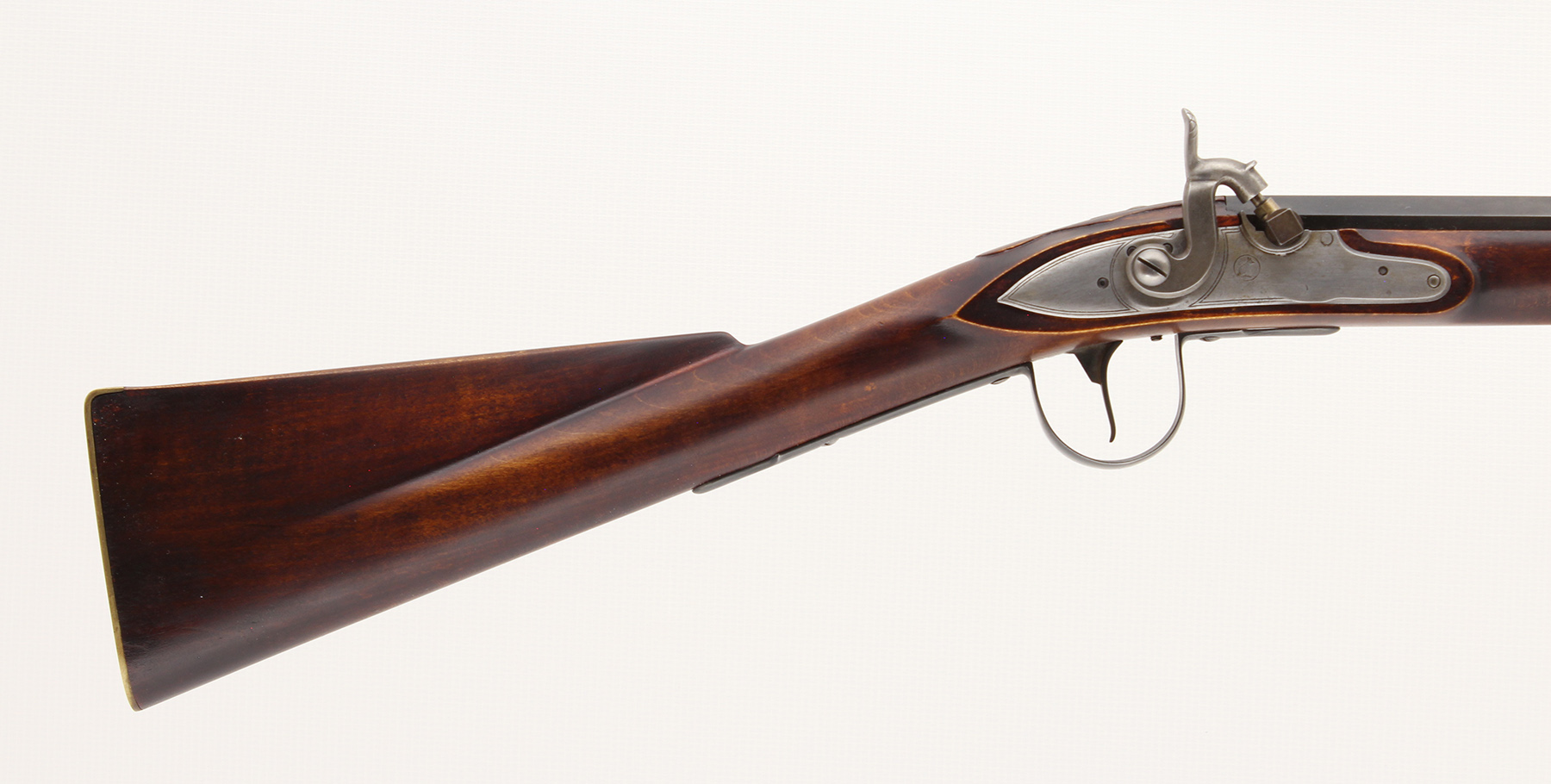
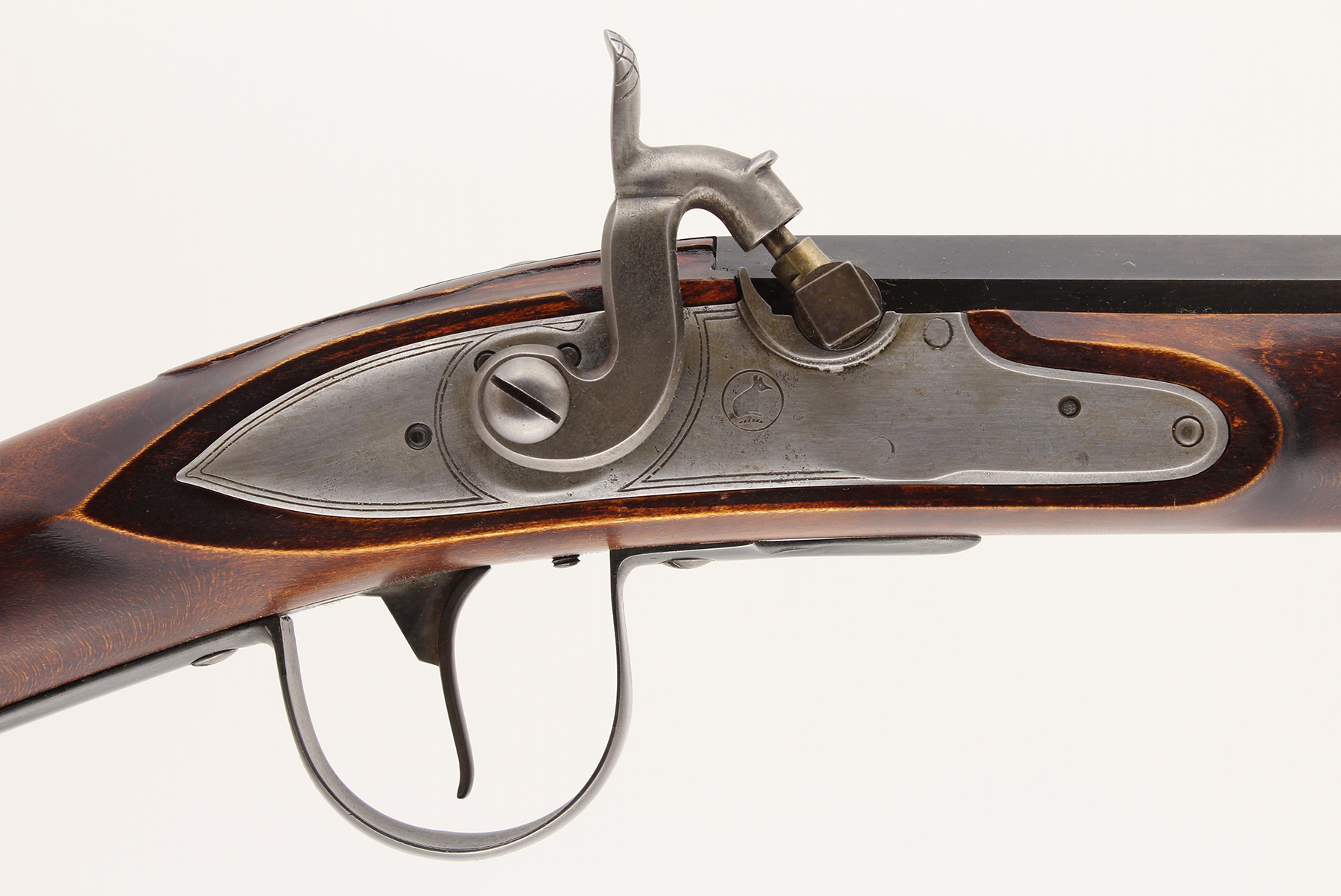
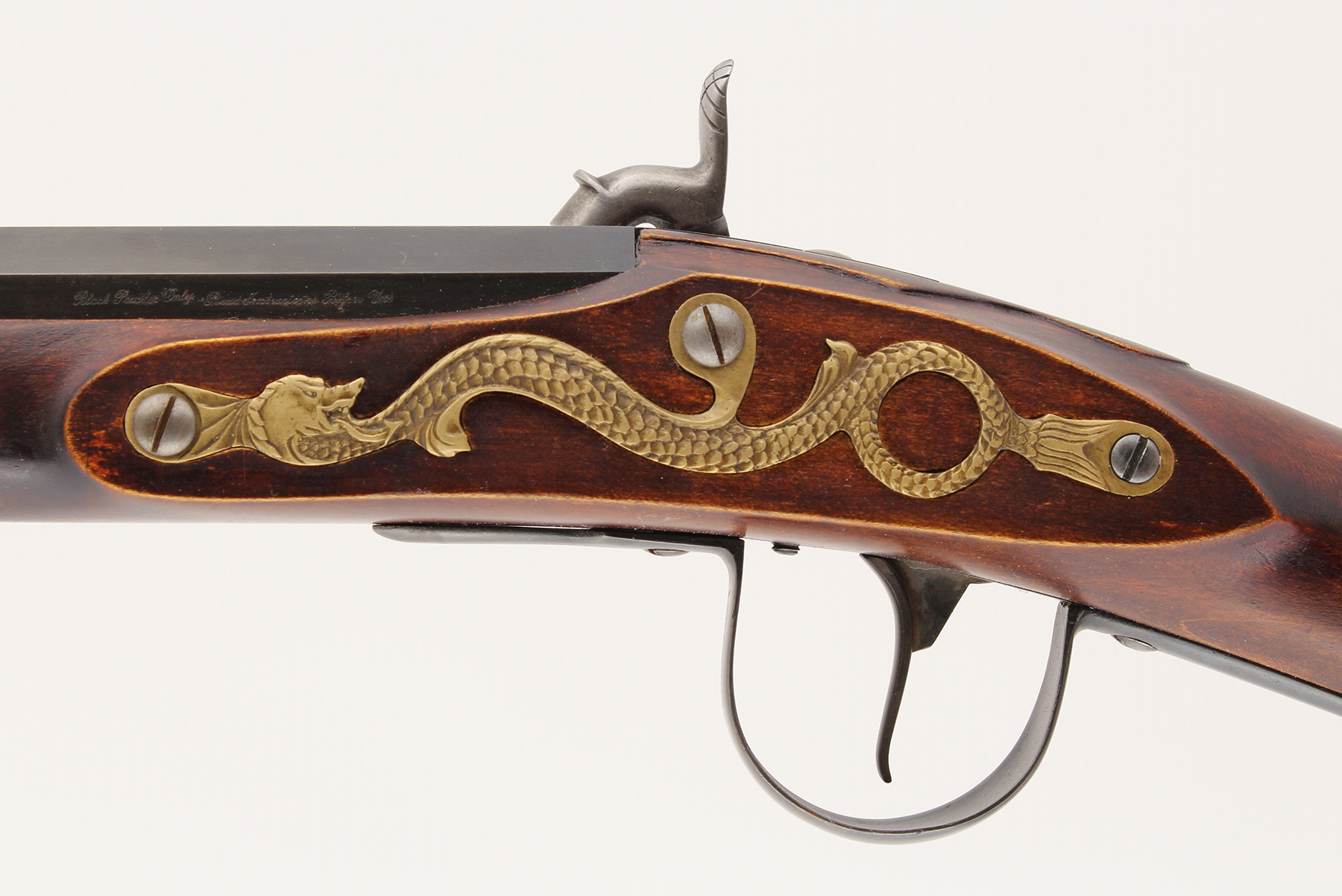
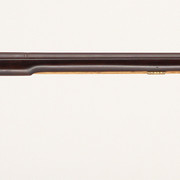
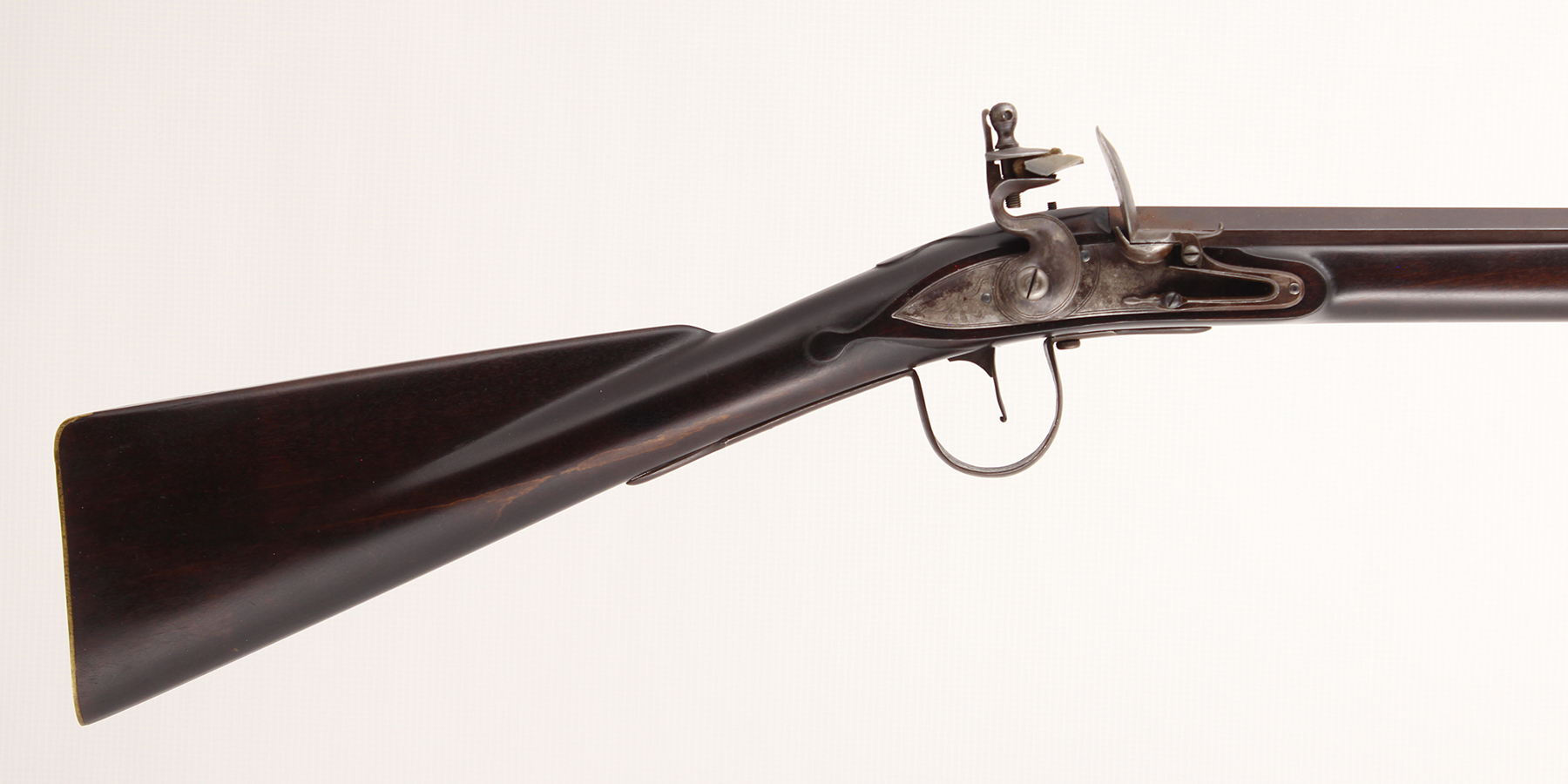
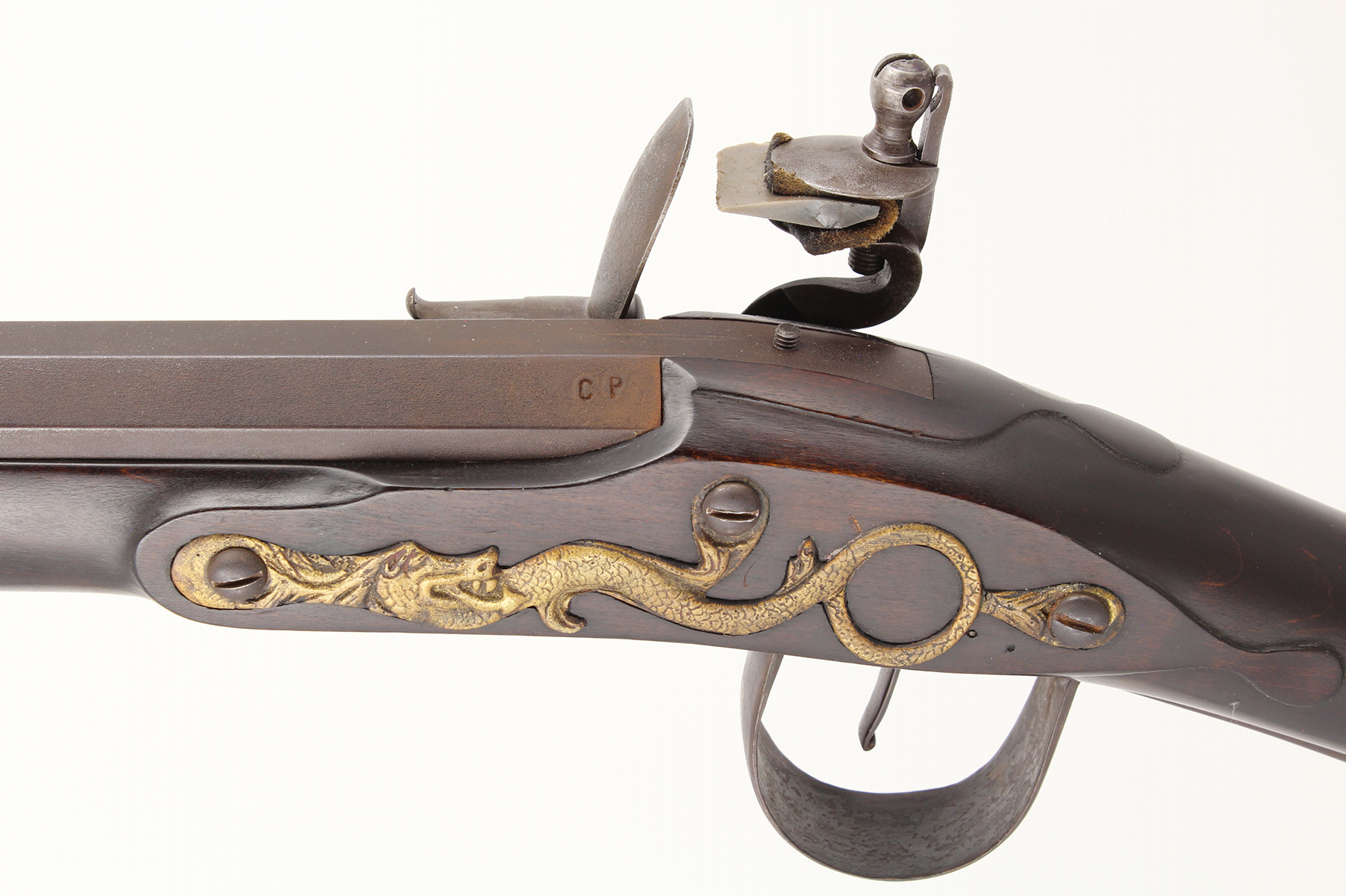
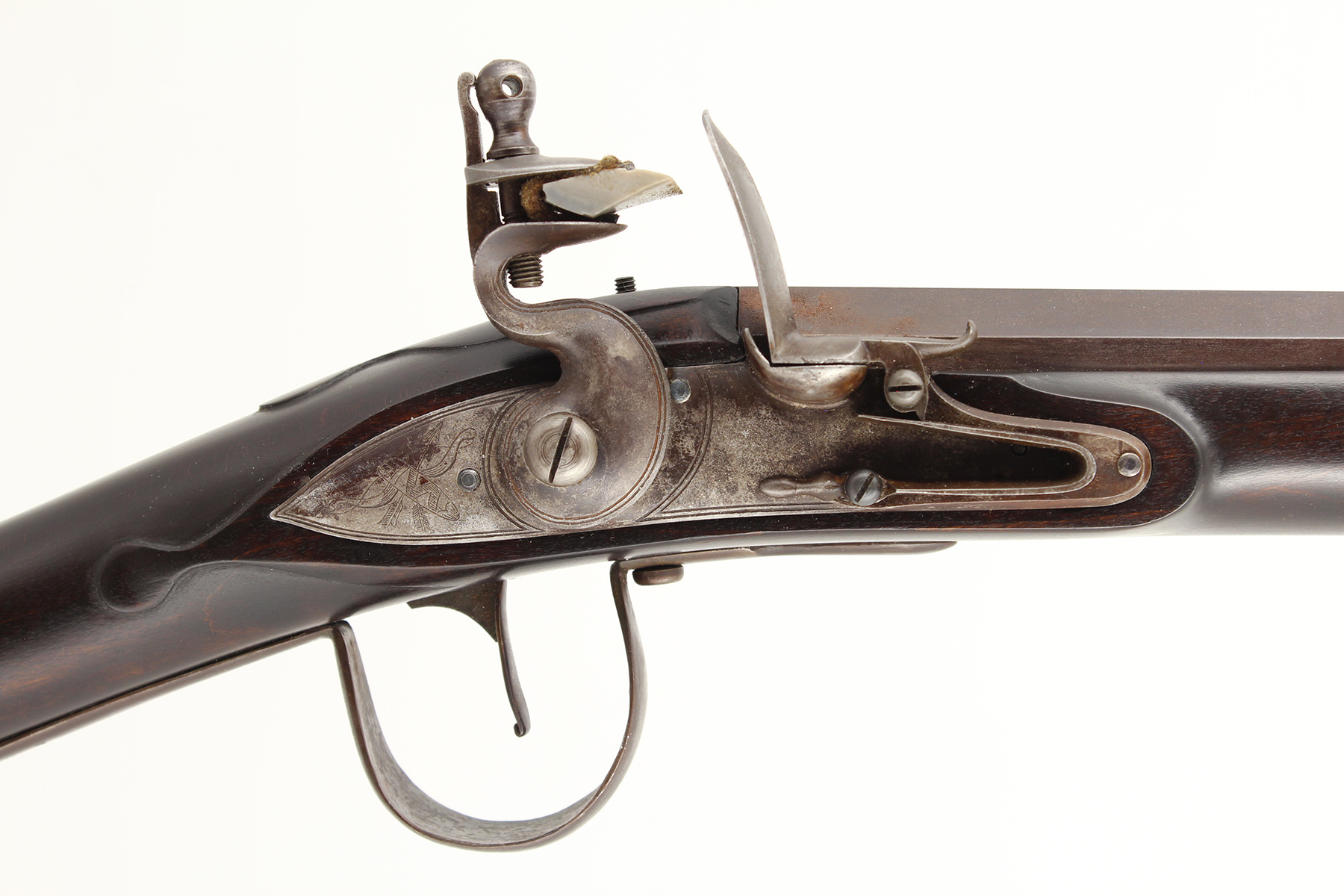
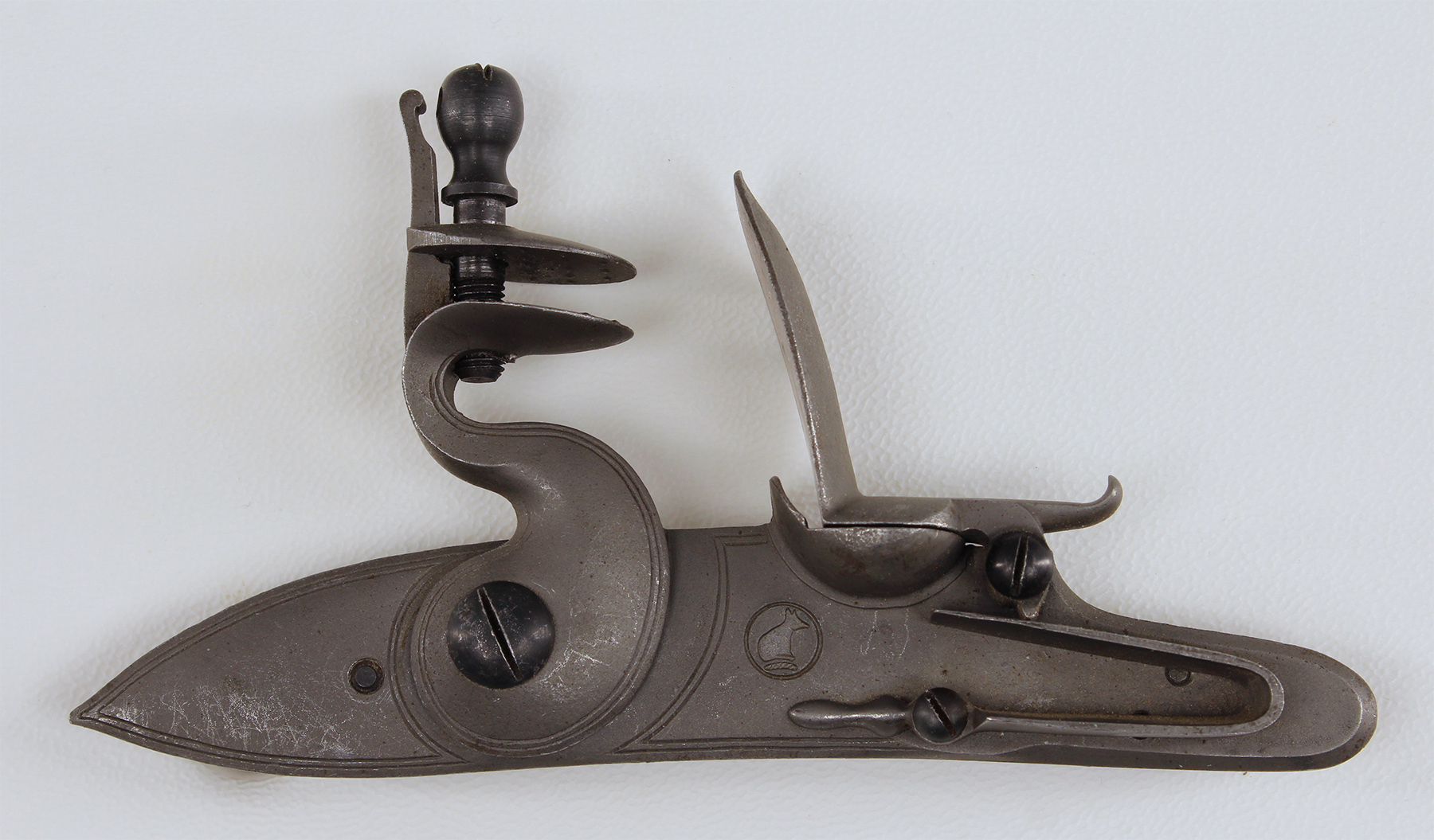
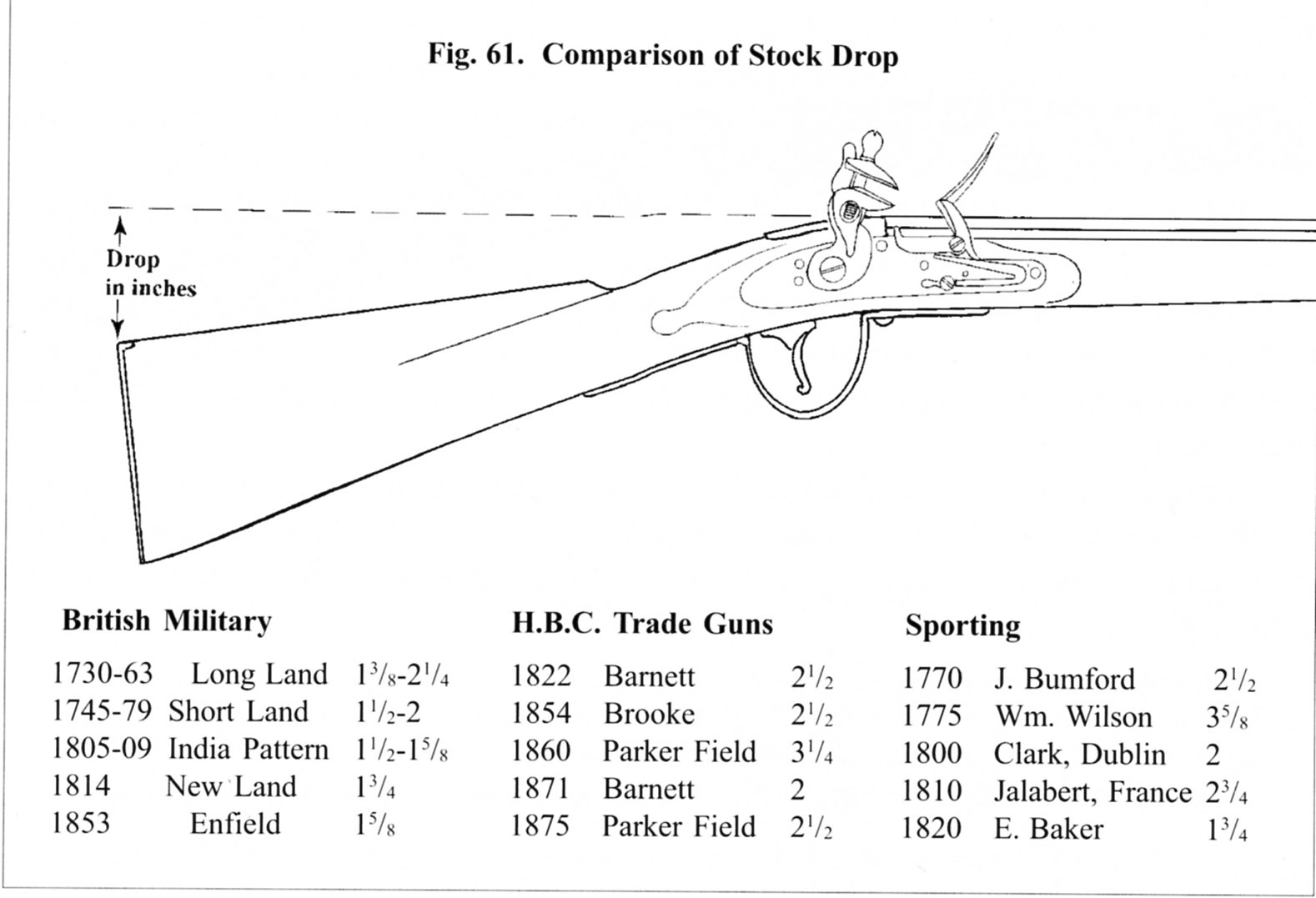

Thank you so much, very informative. Think I'm going with TOTW trade gun kit with nail on butt plate, their plans, and see if I can get the stock pre-inletted barrel channel and ramrod channel and leave the lock area non inletted. I'll go with the Caywood trade gun lock.Dave,
I just wanted to followup with some photos of a couple NW trade guns with Danny Caywood locks and to give you a few other tips.
This first gun was built by a friend using one of Caywood's kits.

I like this version because it is nice and slim. One thing I've found in my research is that Indians complained if the trade guns were big and bulky. They liked slim, light guns. The earlier (18th century) NW trade guns were slimmer than the later (2nd quarter 19th century) trade guns.

Note that this gun does not have the beaver tail finial on the rear of the lock panel.
The previous owner of this gun shortened the barrel and converted the lock from flint to percussion some time after he initially assembled it. The barrel is presently 35" long, 20 gauge (0.615"), and 1-1/16" at the breech. Caywood's website says the normal barrel lengths are 24, 36, and 41 inches.
Close-up of the converted lock.

Close-up of the serpent side plate from Caywood. This is an excellent casting with very well defined scales and other detail.

This next contemporary NW trade gun is a custom build that I know very little about including who the builder was. It has one of Caywood's Wilson English Trade Gun locks.

It has some early features and some later features. It is pretty slim for the barrel size. The barrel is 48" long and 1.18" at the breech. That's close to 1-3/16", so it's pretty wide at the breech. It still has a slim wrist and forestock, but is heavy because of the weight of the barrel. The bore is only 0.570" which would be equivalent to the 28 balls-to-the-pound that was common for Hudson's Bay Co. trade guns.
The standard barrel lengths for HBC orders after 1731 were 4 ft, 3-1/2 ft, and 3 ft with the 4 ft length making up half to two-thirds of the orders up to 1781.

It has a well executed beaver tail finial on the back of the lock panel. Looking at the pictures in Jim Gordon's Great Gunmakers for the Early West, it's similar in size and shape to the beaver tails on Wilson's trade guns.
Where the Caywood kit gun has a butt plate that is held on with two screws, this gun's butt plate has eight square nails holding it on.
The serpent side plate

Rather than Caywood's NW Trade Gun lock, this custom builder chose to use Caywood's Wilson English Trade Gun lock with the unbridled frizzen--another early feature.

Here is a photo of Caywood's NW Trade Gun lock.

The locks are the same except the NW lock has the "circle fox" cast in, while the Wilson English lock has the hunter's bow and arrows engraving cast in behind the cock.
Some people will use one of Chamber's round face English locks or L&R's Queen Ann lock or Davis' Early English flintlock on a NW Trade Gun. There are differences in the cocks and pan shapes of these locks versus a proper trade gun lock. A lot of gun makers seem to be content with less authenticity with regards to locks than any other part of a gun.
I had previously mentioned the nailed on butt plates are generally earlier than the screwed on butt plates and the bulbous finials on the trigger guard are earlier than the elongated finials.
Another early feature on NW guns is the use of three lock bolts. Neither of the guns pictured above have this third lock bolt as the back screw in the serpent side plate is simply a wood screw. If you want this early feature, you need to make sure you pick a side plate that will match your chosen lock length.
The beaver tail behind the lock panel is not necessarily an early feature, but it seems to be standard for some builders and conspicuously absent on other gunmakers trade guns.
In Gordon's book, nearly all the Wilson NW guns have the beaver tail on the lock panel as do nearly all the Barnett NW guns. The four Ketland NW guns pictured do not. The beaver tails are absent on the Wheeler NW guns as well as the Whately guns, but present on the Grice NW guns.
A friend who has studied many original NW trade guns and shot several contemporary trade guns pointed out to me that the drop on many original guns was much less than what modern shooters are used to.
S. James Gooding reported in his book Trade Guns of the Hudson's Bay Company 1670-1970 that this was also a common complaint of their Indian customers who thought the stock often too straight and/or too square. Gooding found this complaint interesting and compared the stock drop of a sampling of NW trade guns to British military guns and English sporting guns. He found the trade guns stock drop were about the same as period sporting guns. See his comparison below.

What wasn't fully appreciated was that the English sporting gun was meant for wing shooting where one instinctively points the gun versus deliberately aiming it. If one tries to get their cheek low enough on the stock to actually aim down the barrel, it is difficult to do with a trade gun with a drop less than 3 inches.
Some natives found their own solution to this difficulty by modifying the comb of the stock like this one.

I have a NW trade gun that was made in 1979 by Michael Hayes with a drop of only 2-1/4", and it is very uncomfortable to scrunch my face down low enough on the stock to aim down the barrel. The two guns pictured above have stock drop of just under 3" and are easier to aim. A drop of 3-1/2" might be more ideal for me.
Another issue is the top of the comb on many contemporary trade guns are flat with a square corner right where my cheek rests. That might have been the source of the Indians' complaint of the guns being "too square".
My last tip concerns plans or blue prints to help guide your build. I have a set of plans from North Star West by Matt Dennison, another set copyrighted in 1982 and drawn by Gene Weringa, and a set of Track of the Wolf's current plans. Track's plans are by far the better of the three. They are the most detailed with many views and written descriptions, instructions, and tips. I highly recommend them as a guide. They're for a little later gun than you plan to make, but it should be obvious and easy to see where to substitute the earlier parts. The main thing is that they will guide you to the proper layout.
https://www.trackofthewolf.com/Categories/PartDetail.aspx/327/1/PLAN-NW?PageSize=50
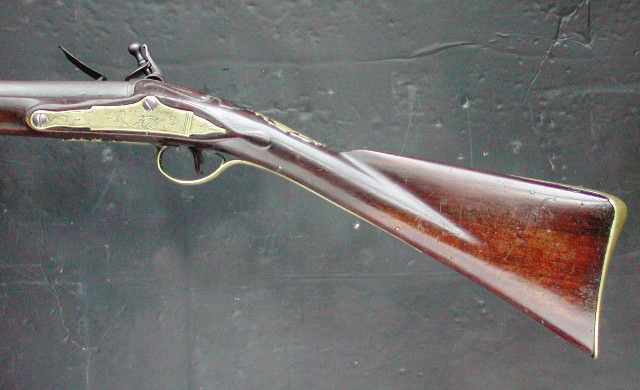
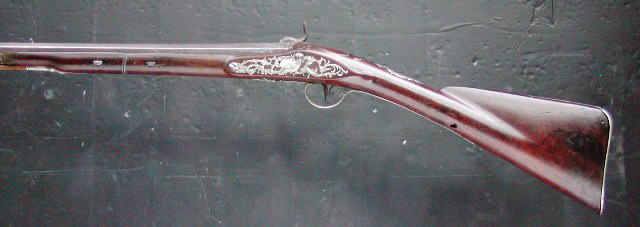
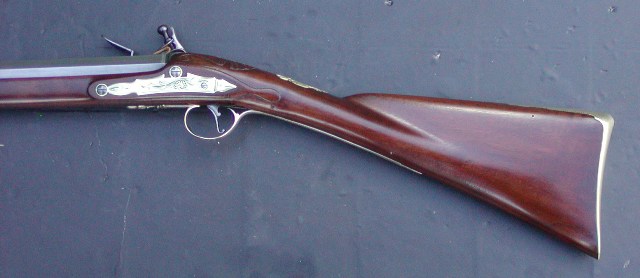
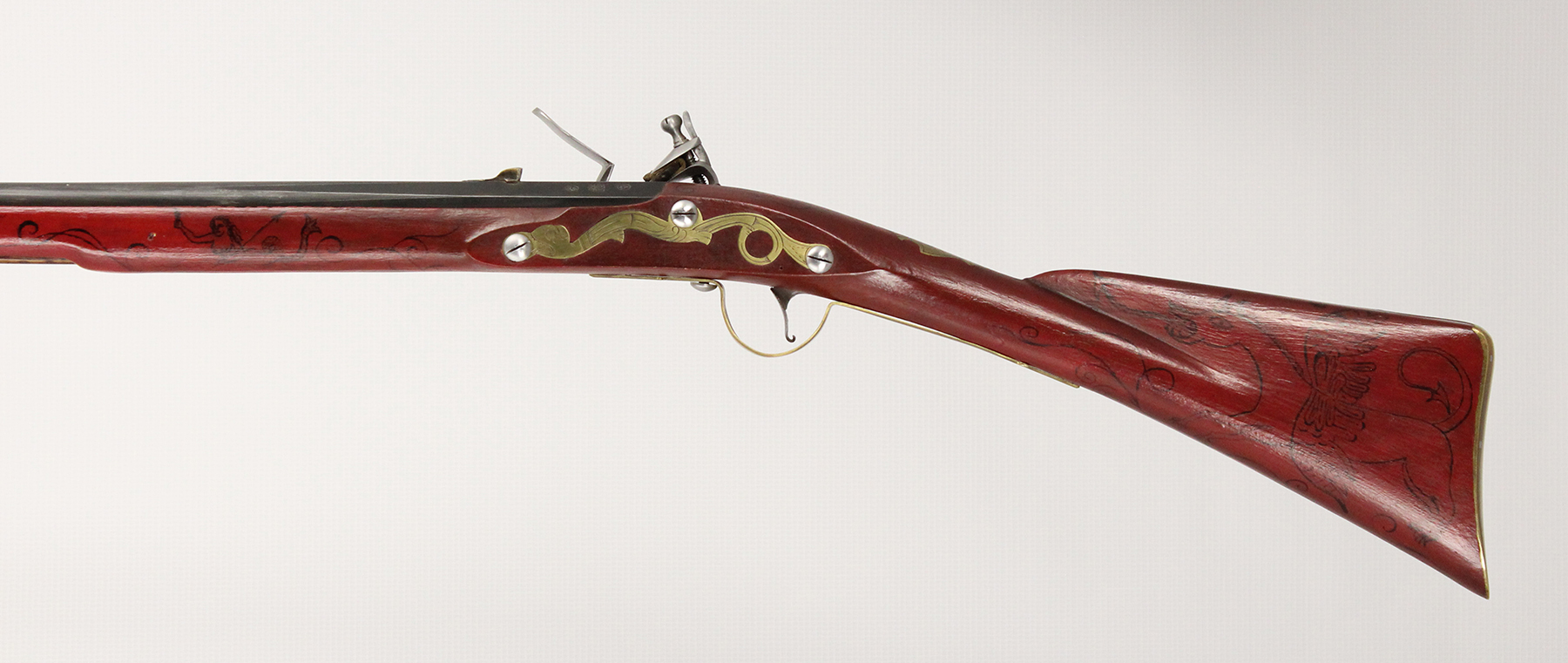

Enter your email address to join: